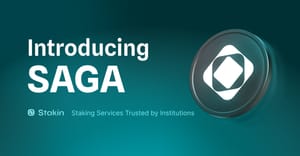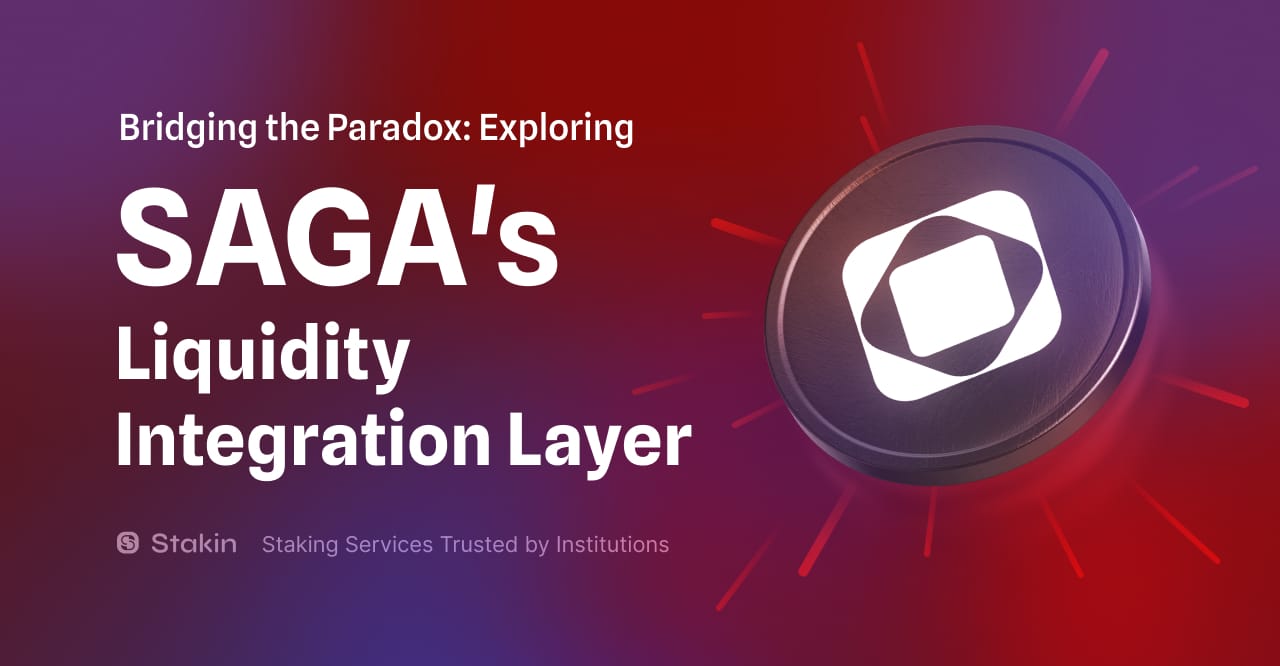What is the Saga Protocol? What are chainlets? And how does Cosmos’ so-called Optimistic Coordination approach define Saga’s security framework?
---------------------
The Saga protocol was designed to streamline the creation of application-specific blockchains. This is achieved by transforming how developers and users interact with blockchain technology.
Saga simplifies the launch of bespoke blockchains, termed "Chainlets," by leveraging a model of shared security in managing validator activities, and a streamlined process for deploying blockchains. This makes the process of deploying smart contracts very straightforward.
You may also be interested in:
- Everything You Need to Know About the Ethereum Dencun upgrade
- Sui Blockchain: A Deep Dive
- Dymension Blockchain: A Deep Dive
Saga targets the fast-growing, Web3 gaming-and-entertainment sector. This segment is rapidly emerging as an area with critical demands for dedicated blockchain environments and highly reliable service level agreements — near-perfect uptime is a must - and so is the appeal of Saga in this context.
As user engagement with the multiverse increases, so do the expectations for performance and seamless user experience. Crypto-based platforms are thus under pressure to meet these growing demands. Although the multiverse represents an exciting and expanding field, the foundational aspect of Web3 still remains decentralized finance (DeFi).
Saga's advancements in blockchain technology facilitate the processing of high-volume-low-value types of transactions. This capability is set to unlock new categories of DeFi applications, broadening the scope of what's achievable in this segment.
SAGA Chainlets
Developers seeking to deploy smart contracts within Saga initiate their projects by requesting a so-called Chainlet from the Saga Mainnet.
These Chainlets are bespoke blockchains, tailored to individual applications and are fortified by the Cosmos Interchain Security (ICS), with security oversight by the Saga Mainnet's validators.
These validators, who are also responsible for the Mainnet, ensure the integrity of the Chainlets by producing blocks and enforcing compliance with a specified service-level agreement (SLA). This SLA mandates certain standards such as validator uptime, operational relayers and services, and accurate validations without any misconduct like double-signing.
Should a validator breach the SLA terms, their infraction is reported to the Mainnet via the Inter Blockchain Communication (IBC) by their peers, which triggers the Mainnet to penalize the offender by slashing their staked SAGA tokens. The IBC protocol ensures that each Chainlet, under ICS, is as secure as the Saga Mainnet itself, eliminating the need for separate, native staking tokens for each Chainlet.
Chainlets are versatile and can be equipped with a range of Cosmos SDK modules, including different virtual machines such as EVM, Cosmwasm, SolanaVM, and MoveVM, with the flexibility to choose specific implementations like Juno's Cosmwasm or Osmosis's version. Each Chainlet operates with a VM deployed specifically for its blockchain.
To activate a Chainlet, developers place a request with the Saga Mainnet. The mainnet validators then set up the new Chainlet according to the specifications. Following this setup, developers can deploy their smart contracts onto the newly provisioned Chainlet, marking the start of their application's live operations on the Saga network.
The architecture of Chainlets is modular, with components like the VM module, the SDK, and Tendermint Core capable of being updated individually. This independence from the Mainnet and other applications affords a level of customization and upgradability that can cater to specific needs and advancements over time.
In addition to Cosmos SDK and Tendermint, Saga broadens its compatibility to include other tech stacks, like Polygon Edge.
Saga Protocol’s shared security approach
Deploying an application-specific chain on the Cosmos network presents a notable challenge around establishing robust security. Traditionally, this security challenge involves assembling a group of validators, distributing staking tokens, and crafting a token-based security framework for each chain.
Saga introduces a solution to this hurdle by adopting shared security, enabling each Saga Chainlet to be protected by the collective strength of the Saga Mainnet validators.
Shared security in Saga draws inspiration from the Cosmos Hub's initial approach to interchain staking, known as Optimistic Coordination.
This method is foundational to ensuring the integrity and safety of each Chainlet. Under the Optimistic Coordination approach, every Saga Mainnet validator has the responsibility to oversee and validate activities across all Chainlets.
As mentioned above, Saga mainnet validators adhere to a comprehensive Service-Level Agreement (SLA). To maintain this high standard, an auditor is appointed to monitor compliance with the SLA. Through the principle of Optimistic Coordination, Chainlets gain the advantage of Mainnet's security measures, ensuring a secure and reliable environment for all users.
SAGA Tokenomics
The Saga network's token economics are structured under a bifurcated model, consisting of two distinct segments: the front end and the back end.
The front-end aspect encompasses the transactional flow of tokens that occurs between the users who interact with the Chainlets and the developers who create them. It's where the operational utility of the tokens comes to the fore, facilitating the exchange of value for services or features offered by the Chainlets.
The back-end refers to the token transactions that take place from the Chainlet developers back to the Saga network. This segment is more structural, underpinning the broader economic activities that sustain the network, such as compensating for security or network functionalities provided by Saga.
By delineating the token economics into these two components, Saga simplifies the transactional processes for users and developers and ensures a clear demarcation of token utility and value distribution.
This separation is strategically designed to maximize usability, enabling a straightforward and transparent economic model that can be easily navigated by all participants.
Conclusion
Saga Protocol represents a transformative approach to blockchain development, particularly for application-specific needs. By simplifying the deployment process and democratizing access to secure, scalable blockchain infrastructure, Saga addresses critical pain points in building blockchain applications.
The protocol's innovative use of shared security, alongside mechanisms like Optimistic Coordination, not only alleviates the complexities associated with securing individual chains but ensures that every Chainlet benefits from the robust security framework of the Saga Mainnet.
Saga opens up new possibilities where developers can launch and manage their blockchain applications with ease and confidence. With its focus on scalability, flexibility, and security, Saga Protocol is set to play an important role in the evolution of the web3 infrastructure, making it an indispensable tool for developers looking to navigate the vast landscape of decentralized applications.



